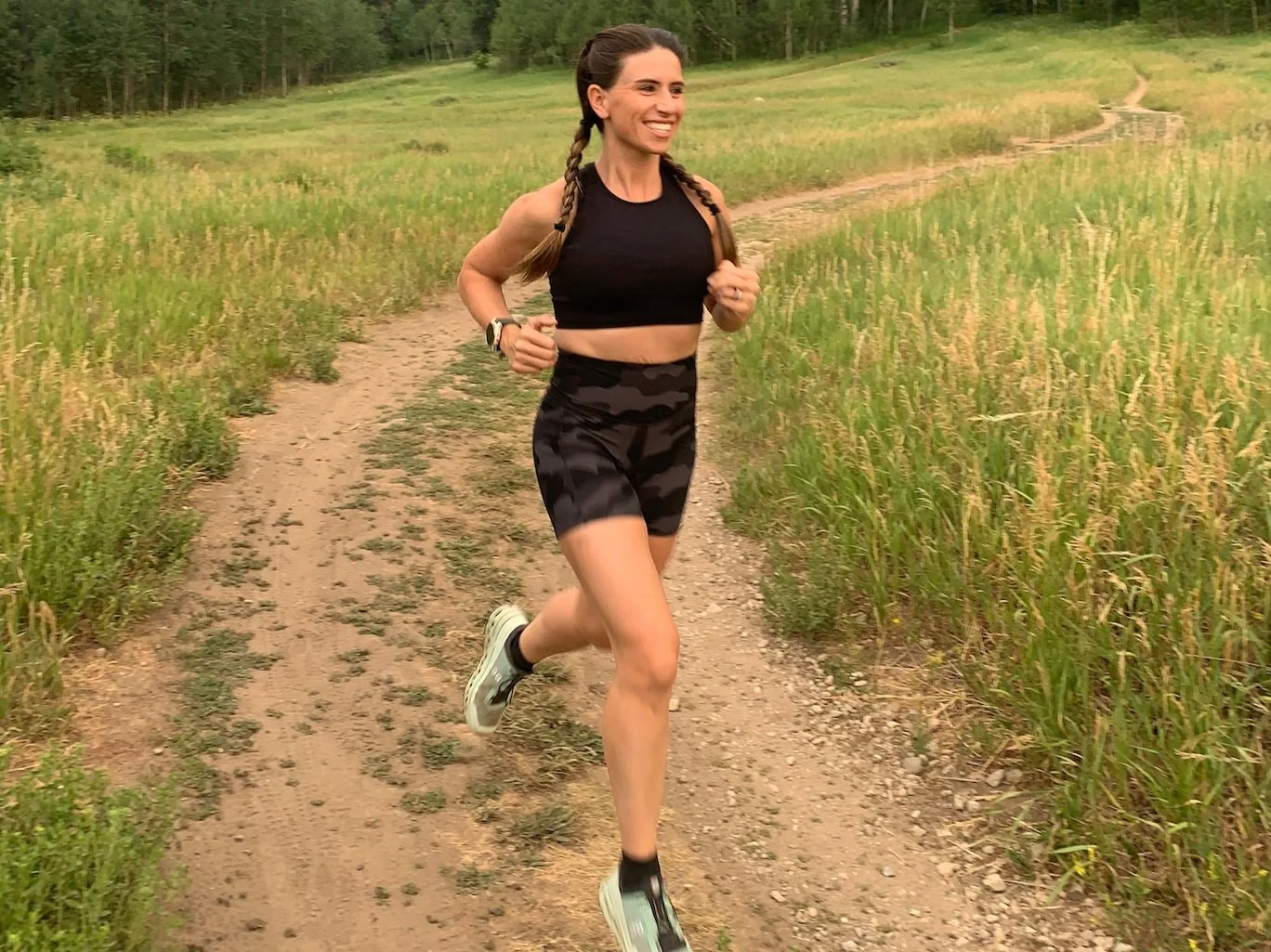Lions & Snakes & Bears . . OH MY! Trail Runner Animal Safety
By: Rhandi Orme
For experienced trail runners, animals like snakes, mountain lions and bears are less of a fear then one might assume. Can they be scary? Yes, of course. Should that stop you from heading out on the trails? No way! Think about how surfers feel about sharks- they know sharks are around and they know what to do if they do encounter one but they are comfortable and at peace in their environment. While sharks plain scare the bleep out of me, like surfers with sharks in the ocean; I am at peace and comfortable in the mountains and on the trails knowing that animals are all around. This comes from experience and education. While wild animals can be scary and should be respected, I know what to do if I have an animal encounter and logic tells me that I will be just fine if I react properly. I have run up close to countless snakes (many rattlers) and recently I was even up close and personal with a mountain lion and I am still here to tell the tell. With a little practice and education- you too can feel safe and comfortable while trail running.
Snake Safety
If you are running in an area with an abundance of snakes, there are a few simple steps that you can take to ease your fears and protect yourself from the very small chance you would be at risk for a snake bite.
Educate yourself on your surrounding/be aware of Snake warning signs in the area. Know whose territory you are entering. If you know what types of snakes are around you, you will be less scared and more prepared. For example, you don’t need take action if you see at garter snake but if you see a rattlesnake you will need to move away and quickly be on your way. Never purposely get to close or try to touch a venomous snake.
Protect your ankles- wear tall socks. Tall socks and gaiters are an extra measure of safety. There are really fantastic tall compression socks for runners, they are thick and breathable and offer good protection. I don’t think that these are a must but if you are on the concerned side or in a high rattle snake zone during peak season, this is an easy thing to throw on. My favorite compression socks are CEP brand they are pricey but worth it. I have gaiters from Ultimate Direction and they come in handy year-around on the trails.
Run when it’s cool- snakes like the heat of the day. If you want to limit risk factors, snakes are less likely to be around in cooler temperatures.
Pay attention to your surroundings- If you know you are in a high snake zone, pay extra attention and keep your eyes and ears open. This means you may need to turn down/off your music or run with 1 earbud in (that’s what I typically do). Also, don’t wander off trail. This is one of the best ways that you can protect yourself. Typically it is fairly easy to see a snake on the trail but off trail they can easily hide in rocks and loose boulders.
Run with a friend- running with a friend really does help tame down the animal fear. I feel like the ultimate goal should be for you to feel comfortable running alone but the way you will get to that level of comfort is with practice. So start in groups or with a friend. Due to my schedule it doesn’t always work for me to run with a friend so I like to feel safe running with or without a friend.
Don’t Panic- if you do see a snake. Slowly back away and give it some space. Don’t try to scare it or scream at it. Find a way to safely move around the snake. In the rare circumstance that you can’t move safely around the snake, you can always turn around or take another route.
Worse case scenario - What happens if you DO get a snake bite? While it is extremely rare to get bit by a snake, if the unthinkable happens and you get bit by a rattlesnake, heres what you need to do.
Stay calm and move away from the snake
Try to remember what it looks like- it’s important that you know what kind of snake bit you.
Seek medical attention immediately, if it’s a venomous bite call 9-1-1- if you don’t have cell service and you are with someone, send them to get help immediately. Do not try to treat it yourself. Exert as little physical exertion as possible.
Mountain Lion Safety
I grew up in the mountains of Northern California running around and playing on the trails as a child for hours on end- sometimes unsupervised (I know, I know, the 1980s were a different decade). My dad was the ultimate mountain man and told me many tall tales about seeing Mountain Lions. Hence I have dreamed of seeing a mountain lion in nature my entire life. Last year while running in the Grand Canyon a mountain lion came within about 10 feet of me. It was beautiful and terrifying but I remembered everything I had learned and followed the steps necessary to stay safe. More confidence that we can coexist safely in the wilderness with animals. Here is what you need to know about mountain lions and what you need to do if you encounter one in the wild.
If you do encounter a mountain lion-
Do not approach lion. Most lions do not want to have a confrontation with humans. Give them space and a way to escape and they will likely avoid you.
Do NOT run. For most, our natural instinct is to run, whatever you do, do not run. Rather, stop, turn and face the lion.
Appear as large as you can and look the animal in the eyes. Raise your arms up, wave your arms slowly. Do whatever you can to look as big as possible. I had a hiking pole with me so I stuck that way in the air and waved it around.
Speak firmly in a loud large voice. Your job is to convince the mountain lion that you are not prey. You can also throw whatever you can reach without crouching down or turning your back. Which brings us to the next important thing-
Do not crouch down or bend over. If you squat or bend over you more closely resemble a 4 legged animal. You do not want to look like an animal. If you do happen to have a you child with you make sure you pick up the child without bending over and turning your back.
Fight back if attacked. “A hiker in southern California used a rock to fend off a mountain lion that was attacking his son. Others have fought back successfully with sticks, caps, jackets, garden tools and their bare hands. Since a mountain lion usually tries to bite the head or neck, try to remain standing and face the attacking animal”. (source NPS )
Bear Safety
First, lets remind ourselves that bear attacks are very rare. Bears typically want to be left alone and if you give them warning that you are around, they will typically go about their business. I read a comforting statistic in trail runner magazine- According to Stephen Herrero, author of Bear Attacks: Their Causes and Avoidance, only 23 people were killed by black bears between 1900 and 1980. That should bring some major peace of mind. That being said, here are some things that you need to do when running in bear country-
Make plenty of noise- talk loudly if you are with a friend, stomp around a bit, do an occasional shout- let bears know that you are in their area. If you are approaching a blind corner it’s important to make some noise. You can even periodically play my music or podcast out loud if you are concerned that there is a bear around- drag your feet in the dirt and stomp around a bit, make some noise.
Carry bear spray- it’s a must in highly populated bear areas. I don’t carry it in areas where chances of seeing a bear are low but certain areas you need to carry it so do your homework. For instance- certain areas of Idaho, Montana, Yellowstone, etc- bring your spray and have it easily accessible.
Be aware of your surroundings- pay close attention to your surroundings. If you are listening to music in your ears keep the volume low or only wear one AirPod. Remain aware of signs that a bear could be near- sudden loud noises, bear scat, tracks. Be alert and ready to act accordingly.
Run with a friend- whenever possible, run with a buddy. This isn’t a hard and fast rule but it’s something to consider. If you are concerned, this will bring you major comfort. Running with a friend (especially a group) means twice the noise, twice the presence. Large animals are more likely to stay away from a group. Group runs are a great idea in bear country.
Time of day/location awareness- Local rangers or online forums may be able to tell you where bears have been most active recently (sidetone- if you do see one yourself, report it so others can be aware). Bears are most active at dusk and dawn so consider avoiding those hours if you are in a high bear activity location.
If you do have a bear encounter, here is what you should do-
STOP running. Do not run.
Try to act as big as you can with your body- stand tall, wave your arms in the area
Talk in a loud and firm voice at the bear.
Slowly back away- do not turn your back
If you do experience a bear attack, this is out of my realm of what I feel comfortable teaching. Bellow is a link to a very helpful and informative article. It will also familiarize you with different types of bears and what to do if you are attacked. Highly recommend that you read this if you are a nature lover and are ever out in bear country. Here it is - What you need to know about bear safety
Last, I hope that you never let fear of animals keep you from experiencing the joy, peace and wonder of the great outdoors. If that’s where you feel you are now, hopefully this has helped you understand that you can get to a place where you can safely enjoy the outdoors without fear overwhelming the joy. Please feel free to reach out to me for additional tips or help, I am happy to share my experiences and giving you an encouraging word. Share and spread the word so that others can be educated and join us in the great outdoors. Happy trails friends.
-Coach Rhandi
References - Womens Running , Trail Runner Magazine , NPS Mountain Lion Safety , Snake Safety

